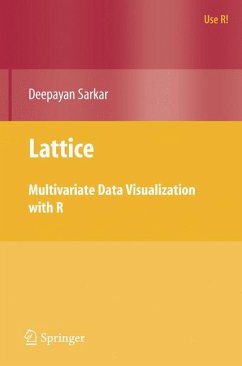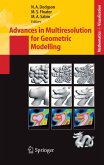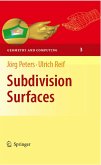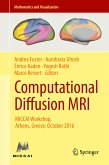The book contains close to150 figures produced with lattice. Many of the examples emphasize principles of good graphical design; almost all use real data sets that are publicly available in various R packages. All code and figures in the book are also available online, along with supplementary material covering more advanced topics.
Deepayan Sarkar won the 2004 John M. Chambers Statistical Software Award for writing lattice while he was a graduate student in Statistics at the University of Wisconsin-Madison. He is currently doing postdoctoral research in the Computational Biology program at the Fred Hutchinson Cancer Research Center, a member of the R Core Team, and an active participant on the R mailing lists.
Dieser Download kann aus rechtlichen Gründen nur mit Rechnungsadresse in A, B, BG, CY, CZ, D, DK, EW, E, FIN, F, GR, HR, H, IRL, I, LT, L, LR, M, NL, PL, P, R, S, SLO, SK ausgeliefert werden.
"This book can be seen as a valuable source for lattice users at all levels. ... The book nicely shows that making good graphics is a process and the reader is guided by the author in a wealth of examples through the various steps needed to reach the final result. A nice feature of the book is that it has an accompanying homepage that contains all the R code and figures of the book." (Klaus Nordhausen, International Statistical Review, Vol. 76 (3), 2008)
"Lattice is a package for R, and it greatly extends the already impressive graphical capabilities. ... I suggest that many users of lattice (and most users of R probably ought to use lattice) should buy this book. ... if one is using this book for self-study, exercises would be very helpful. ... I recommend this book to anyone with a particular interest in the lattice package or a general interest in R graphics." (Peter L. Flom, The American Statistician, Vol. 63 (1), February, 2009)
"The book has 14 chapters separated in three parts. ... very accessible to those inexperienced in the S language. For those readers that have more experience with R, the book is also quite useful. ... Overall, if you are learning R or have not moved beyond the traditional S graphics system, the book shows the range possibilities of what can be done. ... everyone using R would benefit from this book." (Max Kuhn, Technometrics, Vol. 52 (3), August, 2010)









